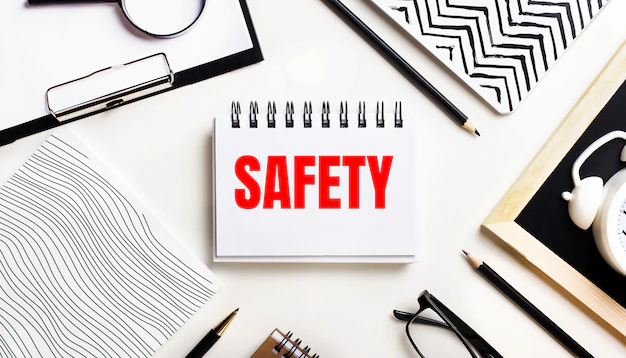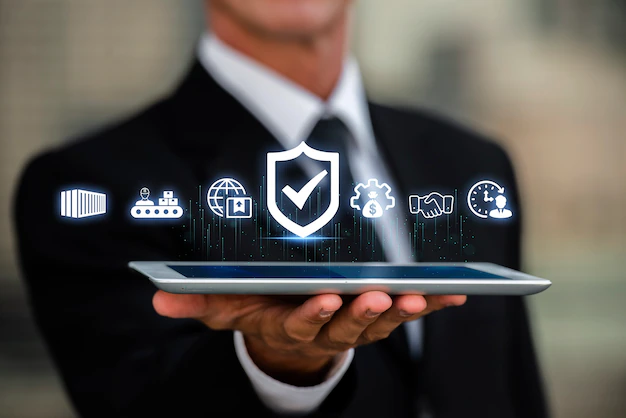How To Know If Someone Blocked You On iMessage? 5 Secret Hacks!
Apr 16, 2025

Apr 16, 2025

Apr 16, 2025

Apr 15, 2025

Apr 11, 2025

Apr 11, 2025

Apr 11, 2025

Apr 08, 2025

Mar 29, 2025
Sorry, but nothing matched your search "". Please try again with some different keywords.


In a world where workplace safety continues to be a primary concern, business owners have an obligation to maintain a safe and secure environment for their employees. Adopting comprehensive safety measures for your business not only protects your employees but also projects a positive image for your establishment.
Integrating diverse safety measures can be overwhelming, but an insightful guide can help streamline the process.
Below, we’ll delve deeper into the significance of safety precautions, the different types, how to create a robust safety plan, the role of technology, and the value of regular safety audits and training.
There is a variety of safety measures that business owners could make use of. These range from traditional approaches like installing security cameras and hiring security personnel to modern solutions such as implementing cybersecurity protocols.
Few businesses make use of systems that allow employees to signal for help without causing much disturbance. One such system is the wireless panic button.
In addition to these, businesses must also abide by health and safety standards set by governing bodies. These include cleanliness standards, proper evacuation plans during emergencies, and adherence to safe operating procedures.
It’s vital for businesses to understand the different safety measures available to determine which are most suited to their needs.
Having a robust safety plan goes a long way in protecting your workers and your business. The success of a safety plan heavily relies on the effectiveness of its implementation. Formulating strategies such as regular safety drills, installing safety equipment, and enforcing safety protocols are integral parts of a solid safety plan.
While formulating your plan, involve your employees in the process. Not only could they provide valuable insights into potential vulnerabilities, but their inclusion also encourages them to adhere to the safety plan. For the education sector, Alyssa Law NJ comes into play and should be included in your safety plan.
It indicates that each public elementary and secondary school building in New Jersey must have at least one panic alarm or an alternative emergency mechanism approved by the New Jersey Department of Education, to enhance response capabilities in a school security emergency.
Remember, your business safety plan should be designed to address different types of emergencies that could occur, ranging from fires to mental health crises in the workplace. Hence, it’s prudent to seek expert advice when creating a safety plan.
A robust safety plan provides a framework for preventing, managing, and recovering from any potential safety threats.

In today’s digital age, technology is playing an increasingly essential role in enhancing business safety. High-resolution security cameras, smart alarms, biometric access controls, and cybersecurity software are some of the technological advancements that businesses are leveraging to enhance their safety measures.
Apart from these, there’s also safety wearable technology such as personal emergency response devices, smart helmets, and employee tracking systems. These cutting-edge devices offer an additional layer of security and safety for workers, particularly those in high-risk jobs.
Embracing technology is effective not only in the prevention of physical and virtual threats to a company but also in the prompt response to any emergencies that might occur.
Integrating technology into your business safety measures offers comprehensive coverage and faster response times, ensuring optimum security in the workplace.
Regular safety audits are essential in keeping a check on your business’s safety measures. They help identify loopholes in your safety plan, keeping you aware of areas that need reinforcing or improvements.
They also provide an opportunity for you to assess the efficiency of the safety measures in place. Regular audits ensure that your business stays updated and always ready to deal with any emergencies that may occur.
Another aspect of maintaining a safe workplace is employee training. Training all employees in safety protocols, the use of safety equipment, and their roles during an emergency significantly improves the workplace’s overall safety.
It is also essential to provide them with the correct PPE. So if you business is based in healthcare, manufacturing, construction, etc., then think about getting them prescription safety glasses with progressive bifocal lenses so they can see perfectly and are always safe when doing their job.
Safety audits and employee training work hand in hand. Together, they help maintain a consistently safe working environment by ensuring that the appropriate safety measures are in place and that everyone understands and follows them.
Read Also:
Barsha Bhattacharya is a senior content writing executive. As a marketing enthusiast and professional for the past 4 years, writing is new to Barsha. And she is loving every bit of it. Her niches are marketing, lifestyle, wellness, travel and entertainment. Apart from writing, Barsha loves to travel, binge-watch, research conspiracy theories, Instagram and overthink.
View all Posts
How To Know If Someone Blocked You On iMessag...
Apr 16, 2025
7 Website Design Mistakes That Are Hurting Yo...
Apr 16, 2025
Programmable Dynamic SEO for Location-Based P...
Apr 15, 2025
Google Boba Game: How To Play This Fun Game B...
Apr 11, 2025
Which Is The Best Video Search Engine Of 2025...
Apr 11, 2025

